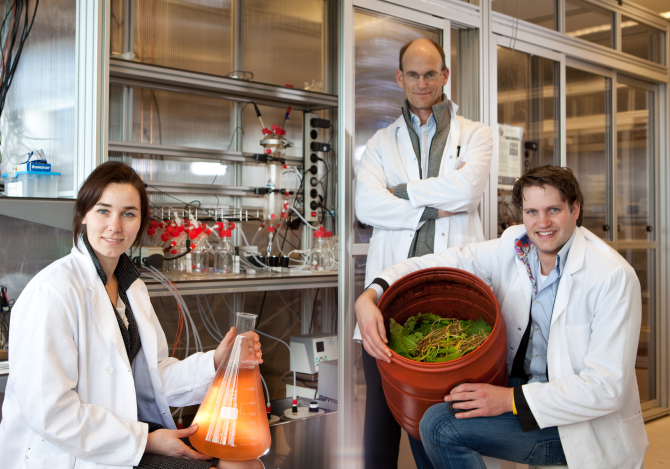
3 ETE discoveries of the past 50 years: 3. From organic waste to high-quality chemicals
In 2007 ETE Ph.D. student Kirsten Steinbusch discovered a method to convert organic waste into a high-quality substance: caproate, a raw material for many valuable chemicals and even biodiesel. Today, the process has been refined and increased to industrial scale by the company Chaincraft BV.
During the short stretch of a four-year Ph.D. research chances are small to discover something really new and special, but scientist Kirsten Steinbusch did her research under a lucky star. During her research the former Ph.D. student at ETE found a new method to convert organic waste into a valuable chemical. Volatile fatty acids, formed during the microbial degradation of this waste, form the base. With help of a different type of microbiology the volatile fatty acids are efficiently converted to medium chain fatty acids: caproate, which has a higher value and is easier to recover. This chemical can be further converted into chemicals and eventually even biodiesel.
Fermenting sludge
‘Using organic waste as feedstock is sustainable, but the conversion has to be energy-efficient,’ Steinbusch says. ‘But I think I've found the right method to get this done.’ As a first step, microorganisms dealt with the raw waste by converting large molecules, such as sugars, proteins and fats into smaller molecules. When conditions are just right, and no oxygen is present, eventually volatile fatty acids, hydrogen and carbon dioxide are formed. Steinbusch initially focused on the conversion of these volatile fatty acids into alcohol, but that didn’t work very well: they found only very little alcohol. ‘After some weeks we measured the fermenting sludge once again, just for the fun of it. We were completely surprised to discover medium chain fatty acids, like caproate and caprylate’, the scientist says. ‘This was a golden find, as these substances can be used for many different purposes.’ They can serve as raw materials for paints and plasticizers, but you can also make biofuel. Making biofuel from caproate is a relatively simple process, according to Steinbusch: by heating the mixture above 300 degrees Celsius will result in the association of these molecules in pairs, resulting in ketons a precursor for biodiesel.
Eureka moment
For Steinbusch the finding was a real eureka moment. ‘I immediately knew this was a very important finding, she says enthusiastically. ‘Until now, it was not known that a mix of numerous microorganisms in a mess of rotting waste could consistently produce such product.’ Reason for ETE to patent the method. The benefits of Steinbusch's method over alcohol production from plant material are enormous. For example, the raw material, organic waste, is relatively inexpensive and also the extraction of the final product is easier and cheaper than bio-alcohol. In addition, using waste as feedstock would claim less agricultural land.
